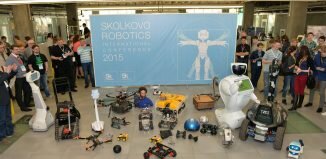Dr. Robot helps expand medical care at LVMC
By Willis Jacobson, Lee Central Coast Newspapers
When a patient is brought into Lompoc Valley Medical Center’s emergency room with neurological issues, such as symptoms of stroke, an alert is immediately sent throughout the hospital and a team of medical professionals rushes to perform a series of tests.
While doctors and nurses make immediate assessments and get CT scans of the patient, one of the newest members of the hospital’s team — a member that could be critical to the sufferer’s survival — methodically makes its way to the patient’s room with robot-like precision.
Well, actually with exact robot precision.
LVMC is now home to a Remote Presence Virtual Independent Telemedicine Assistant, or RP-VITA robot. The 5-foot-tall mobile android — which the staff has nicknamed Dr. Robot — has a high-definition video screen where its head would be. The screen allows neurologists to remotely examine patients and help determine specific treatment plans.
Dr. Steven Reichel, medical director of the LVMC emergency room, said the robot has been a welcome addition to the hospital team since it arrived in mid-December. He noted that Lompoc has one full-time neurologist, so having a full team of the specialists available 24/7 is a major boost.
“I think it’s a really huge benefit for the community — and for us as physicians,” he said. “It gives our patients the best care possible.”
Making a difference
The robot, which will be unveiled to the public during a lecture at the hospital Wednesday evening, was brought to LVMC in a collaboration with Santa Barbara Cottage Hospital. LVMC pays half of the monthly $14,000 cost for the device, which was manufactured by InTouch Health, and Cottage pays the other half.
Since the robot arrived in Lompoc, it has been deployed 42 times for consults, including 31 for “code-stroke” activation, which is the hospital’s stroke alert system.
In the five months from December 2014 through May 2015, LVMC transferred 25 patients with neurological problems to Cottage Hospital for treatment
Those were patients that, with the robot, “we maybe could’ve been able to save on the first day here,” said Yvette Cope, an assistant nurse executive at LVMC.
Ready to roll
Thanks to a partnership with Santa Barbara County EMT services, LVMC’s ER staff is alerted whenever a patient is being brought to the hospital with signs of stroke or other neurological issues.
Once that patient is at the hospital, the 12-person stroke alert team is deployed and one of the on-call neurologists, who are based in the Los Angeles area, is immediately contacted by phone. While the patient is undergoing immediate testing, the robot, which has been programmed with the hospital’s layout, disengages from a docking station and maneuvers itself to the patient’s room.
That neurologist is then able to log in to the robot’s display through an encrypted connection and review the initial scans and examine the patient through a system of specialized cameras.
The equipment within the robot allows the on-call neurologist to zoom in to check the patient’s pupils and read data on equipment near the patient’s bed.
The neurologist can also engage in conversation with the patient and doctors and nurses in the room. Because some crucial medications can be especially dangerous under certain circumstances, Reichel said it is nice having a specialist essentially in the room to provide an instantaneous second opinion, which becomes part of that patient’s medical record.
“I think it’s really helpful to us as emergency room physicians to have the ability to talk to somebody else about these problems, instead of basically being by ourselves,” he said. “Now we have somebody else who we can get information from, and that’s their primary focus, to treat brain problems.”
Informing the public
The staff at LVMC is making a big push to inform the public about early signs of stroke detection. Seeking immediate medical attention is key for any neurological issue, so community members are encouraged to call 911 and not attempt to wait it out or drive to the hospital later.
“In order to treat stroke, you have to have really early intervention,” Reichel said. “If too much time passes, you can’t do anything.”
Strokes are the fourth leading cause of death in the U.S., according to the National Stroke Association. The organization reports that Americans suffer about 795,000 strokes each year, with about 133,000 of those leading to death.
Among the warning signs for strokes are uneven smiles, one weak arm and slurred speech.
Those signs and other stroke-related issues will be the main topics of discussion during a lecture planned for 7 p.m. Wednesday at LVMC’s Ocean’s Seven Café.
Dr. Thomas J. Clark, regional stroke director of the Stroke and Neurovascular Center of Central California, will make a presentation alongside Cope at that event, which will also feature the RP-VITA robot. The lecture is free and open to the public as part of the Lompoc Hospital Foundation’s spring lecture series.
Reichel said the automated member of LVMC’s ER team has been popular among everyone it has come into contact with.
“I’ve been really happy with it and I think all the doctors are like, ‘Wow, this is great,’” he said of the robot. “I think the patients find it kind of interesting and are happy about it, too. Most people are like, ‘Whoa, this is kind of a high-tech place.’
“It’s a huge difference for us to have help,” he added. “It’s a huge help.”
Willis Jacobson covers the city of Lompoc for Lee Central Coast Newspapers. Follow him on Twitter .






